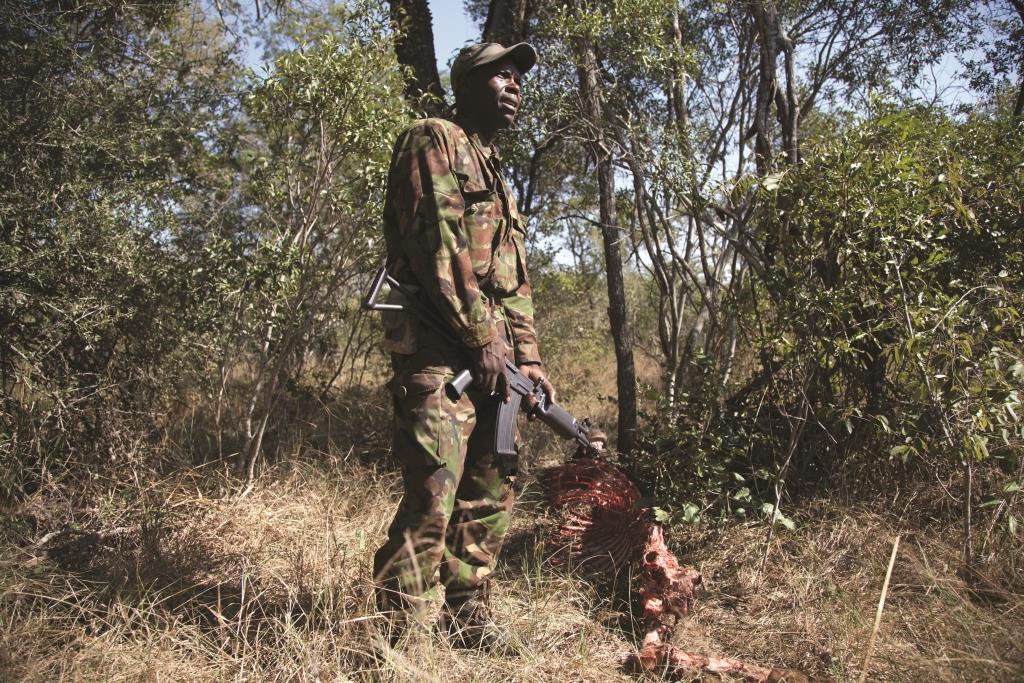Africa is the last true wild frontier in the world; its wildlife racks up more than $30 billion annually.
But, in countries such as Zimbabwe, less money is reaching the government and animal extinction is becoming a reality.
The ruthless killing of Cecil the Lion in Zimbabwe sent shockwaves around the world. It raises the question of whether Africa is getting a raw deal for its wildlife.
In 2012, the tourism sector contributed 10% to Zimbabwe’s Gross Domestic Product (GDP) and the projection was that by this year it should have reached 15%. Statistics for this year are only available in 2016 but there has been a surge in tourists, particularly from the United States.

Loading...
Some American tourists, though, have been caught on the wrong side of the law by participating in unsanctioned lion hunts.
Johnny Rodrigues, a wildlife conservationist, believes the biggest problem standing in the way of animal conservation in Zimbabwe is corruption.
“In the case of Cecil, an American tourist bribed guides for $55,000 to kill a lion that was at the center of major international research. There are many such cases that go unreported,” he says.
In the past 20 years, the lion population in Africa has been depleted by 30%. As of 2014, it is estimated that there are only 30,000 left on the continent.
Zimbabwe has a population of around 1,600 lions, most of which are kept in protected areas away from hunters. Between 1999 and 2009, it was recorded that 800 lions were killed in legal hunts but it is understood that many more were killed in illegal hunts.
Lions, rhino, elephant, giraffe and buffalo are the most popular targets for hunters, but some lesser known animals are also caught up in the illicit trade.
Langton Masunda, a tour operator in Zimbabwe, says poachers and illegal hunters are more equipped and better funded than government rangers. This gives them an obvious advantage over those trying to save the country’s wild animals.
“They have more sophisticated weaponry, are usually better trained and they have communication equipment that the government does not have,” says Masunda.
Not so long ago, more effort was put into protecting the rhinoceros, but poachers shifted their focus to elephants. Zimbabwe has an elephant population of 85,000, with around 30,000 of those being calves. Because of the demand in the Asian market, poachers targeted the elephant at an industrial scale.
“Water sources were contaminated with cyanide. Hundreds would drop dead and in the process other animals, which the poachers had no use for, died too. Even people in rural communities surviving on the same water sources were affected. What makes it bad is that in many cases locals in poverty stricken communities would assist poachers,” says Masunda.
Although they have a harsh penal system for poaching, countries such as South Africa are havens for illegal hunts.
“Each year, more than 20,000 elephants – possibly up to 35,000 – are killed by poachers for their tusks, which are shipped to ivory markets, predominantly in countries such as China and Thailand. In 2014, 1,215 rhinos were killed in South Africa alone, which, when compared with the 13 killed by poachers in 2007, represents a more than 9,000 percent increase in rhino poaching,” says a World Economic Forum report.

The spiraling poaching figures are driven by the Asian market. In countries such as China and Vietnam, it is believed the rhino horn has medicinal properties that can cure everything from headaches to cancer. Elephant tusks are crushed into a powder and used to make aphrodisiacs, among other things.
The development of rural communities is also a factor that opens trade links with the rest of the world. It makes smuggling easier.
But, in Southern Africa, there is hope that some of the targeted animals can be saved, especially at the Kavango Zambezi Transfrontier Conservation Area (KAZA) that brings together Zambia, Namibia, Zimbabwe, Angola and Botswana.
KAZA is the world’s largest wildlife park, slightly bigger than Italy.
In 2014, on the Botswana side of the park, President Ian Khama banned hunting to preserve the animals. As an alternative, the country is investing in luxurious camps. Last year alone, it was estimated that tourism brought in $337.5 million. A few greedy tourists with rifles should not be allowed to decimate this important source of income.
Loading...
